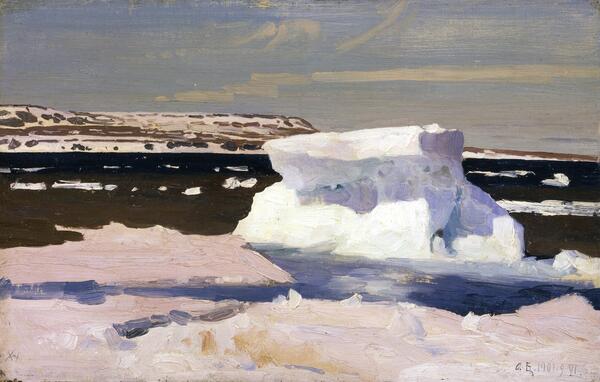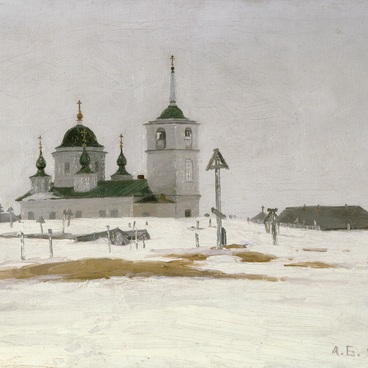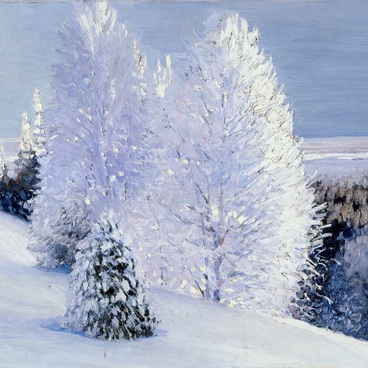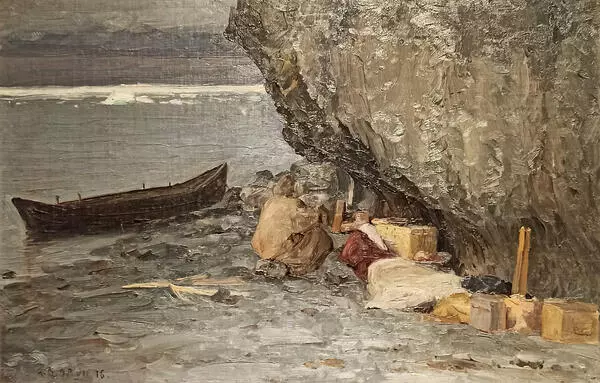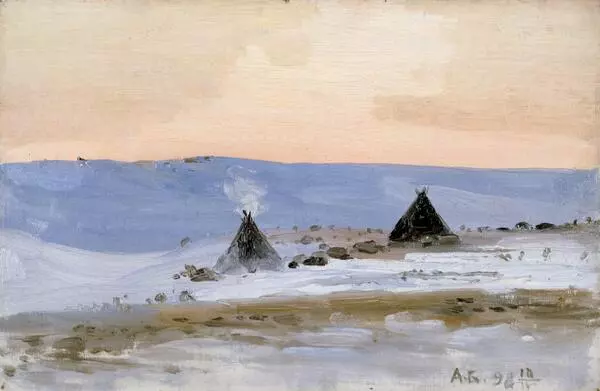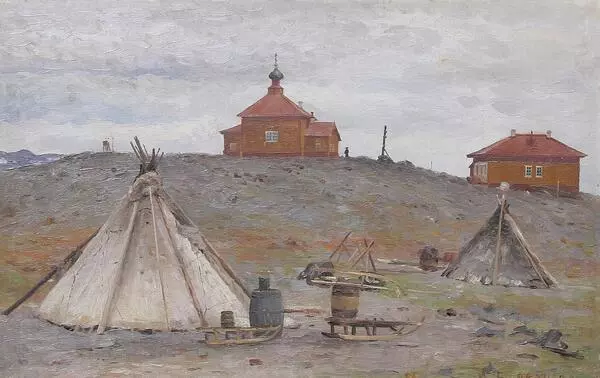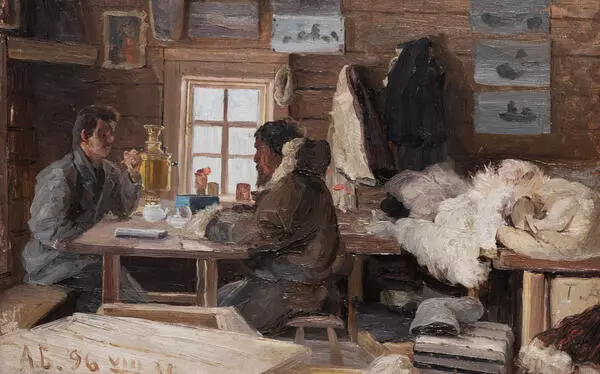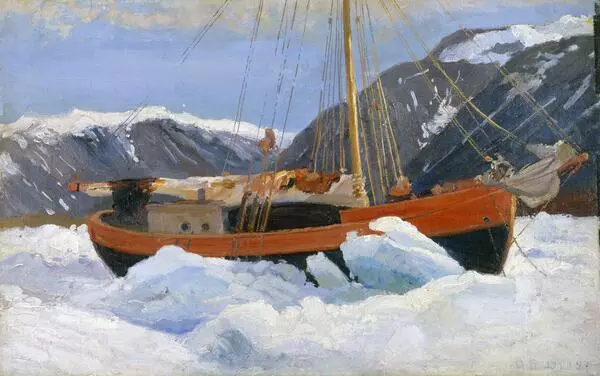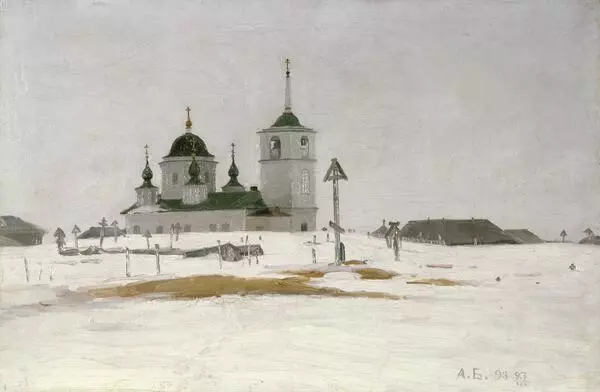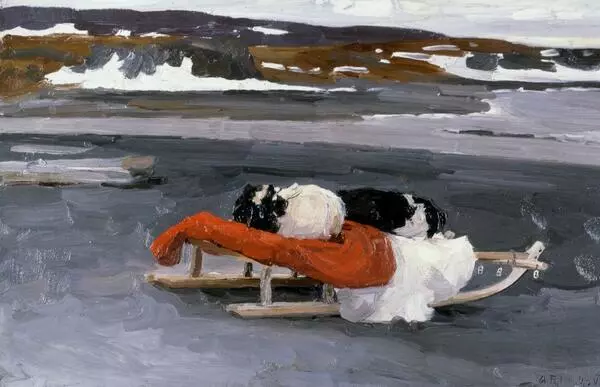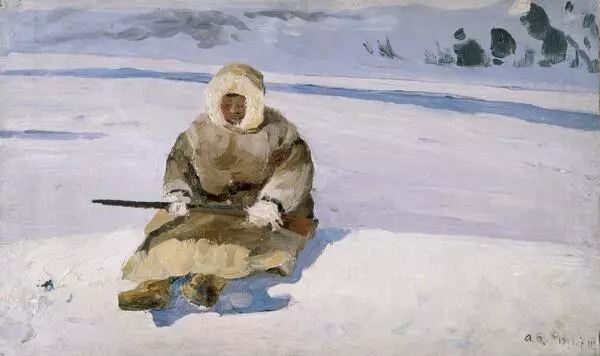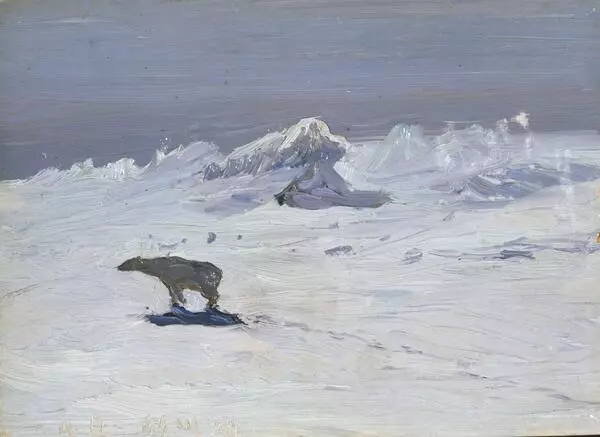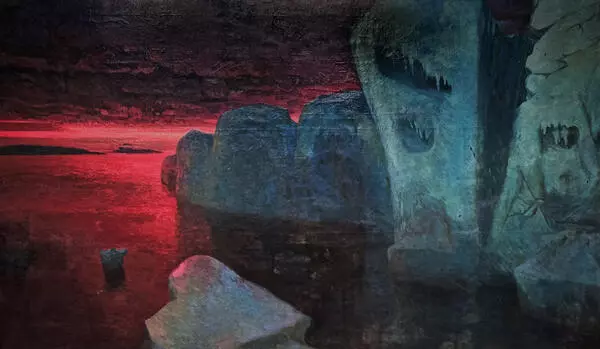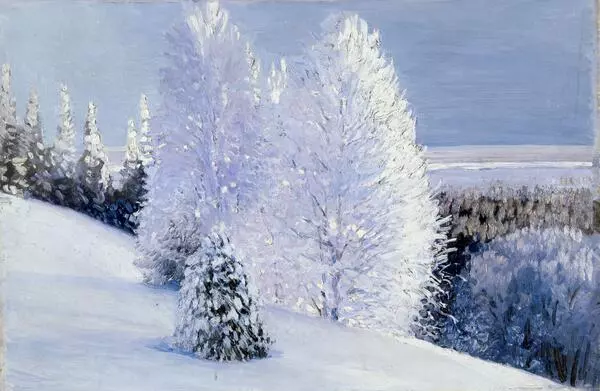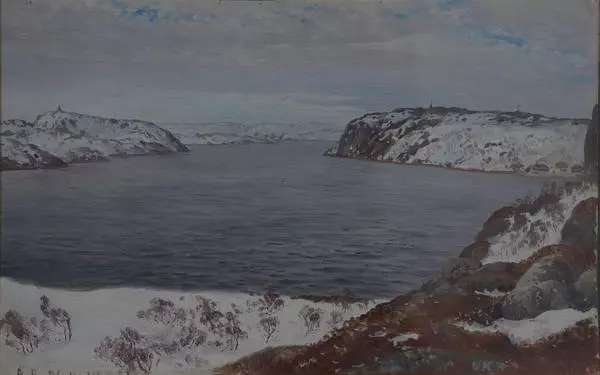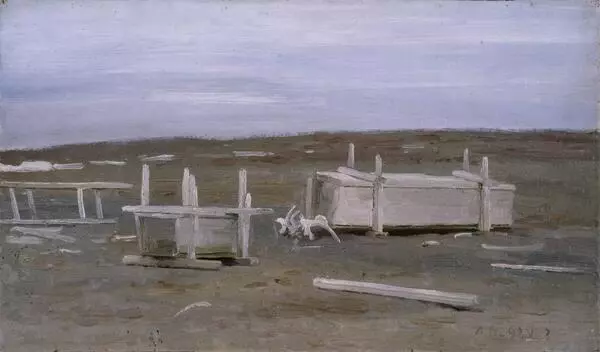It’s for a reason that Alexander Borisov was referred to as an “artist of the eternal ice”: he could masterfully render even the most subtle hues of white. The protagonists of his paintings are ice floes, icebergs, glaciers, snowdrifts and other elements of the Arctic scenery.
However, before setting to paint, the artist had to undertake a thorough study on the topic. “Northern floating ice is extremely and arrestingly appealing. Apart from the shimmering tonality, the fanciful shapes and patterns found here are beyond any, even the most vivid, imagination. Sometimes, when the sun is shining and there is a heavy current, you can see a huge kaleidoscope set in motion by a mysterious force, the image constantly changing, and every minute there is yet another combination of ever-changing lines and tones. You watch two ice colossi moving towards each other, the gap between them shrinking; they collide, but it looks as if they just want to crush an ice flow between them, so huge that it has room for about five hundred people. The smashed ice flow disappears, and the white giants move apart, the black ocean waters rubbing their edges. I have made an interesting observation about the reflection of icebergs in the water. At first, I was perplexed and couldn”t understand why those icebergs, whose colour is a pure aquamarine, give a dark reflection. It looked so bizarre. However, that puzzle had an easy solution: the waves are constantly grinding the iceberg, eroding ditches in its base and therefore forming some kind of ice awning. It is that awning, invisible when you look at the iceberg from above, what gives a dark reflection.”
The study The Kara Sea. A View of Novaya Zemlya shows a floating giant sparkling with its ice edges. Its T-shaped figure looks odd, but is quite common for Borisov’s landscapes. It was a chip of a huge iceberg, whose underwater part was now visible, the artist explained.
However, before setting to paint, the artist had to undertake a thorough study on the topic. “Northern floating ice is extremely and arrestingly appealing. Apart from the shimmering tonality, the fanciful shapes and patterns found here are beyond any, even the most vivid, imagination. Sometimes, when the sun is shining and there is a heavy current, you can see a huge kaleidoscope set in motion by a mysterious force, the image constantly changing, and every minute there is yet another combination of ever-changing lines and tones. You watch two ice colossi moving towards each other, the gap between them shrinking; they collide, but it looks as if they just want to crush an ice flow between them, so huge that it has room for about five hundred people. The smashed ice flow disappears, and the white giants move apart, the black ocean waters rubbing their edges. I have made an interesting observation about the reflection of icebergs in the water. At first, I was perplexed and couldn”t understand why those icebergs, whose colour is a pure aquamarine, give a dark reflection. It looked so bizarre. However, that puzzle had an easy solution: the waves are constantly grinding the iceberg, eroding ditches in its base and therefore forming some kind of ice awning. It is that awning, invisible when you look at the iceberg from above, what gives a dark reflection.”
The study The Kara Sea. A View of Novaya Zemlya shows a floating giant sparkling with its ice edges. Its T-shaped figure looks odd, but is quite common for Borisov’s landscapes. It was a chip of a huge iceberg, whose underwater part was now visible, the artist explained.

